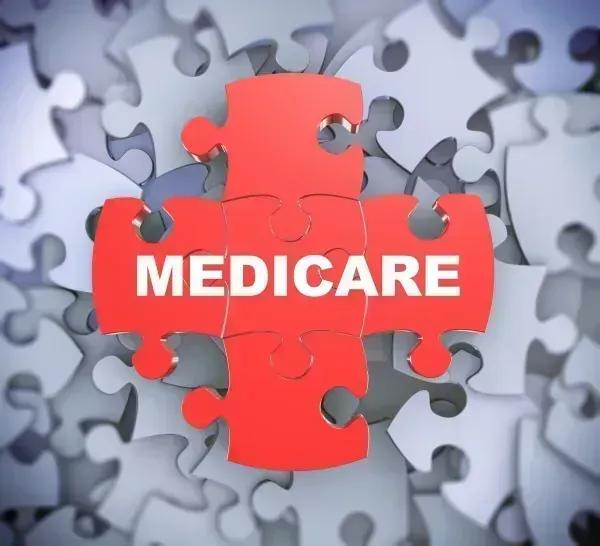ED Coding and Reimbursement Alert
CMS Chooses Not to Implement E/M Changes in 2019
But some new updates are applicable to EDs.
Emergency departments have been keeping a close eye on CMS’ plans for 2019, particularly since the proposed Medicare Physician Fee Schedule suggested that some big changes could be on deck for the new year. Fortunately, nothing particularly dramatic will be coming your way in January, but some changes are lined up that could affect your ED. Read on for the highlights of what CMS finalized in the 2019 Fee Schedule Final Rule.
Big E/M Changes Delayed
When CMS created its proposed rule for 2019, the agency had suggested making major changes to the outpatient E/M codes, which would have debuted a single payment rate for levels two through five. However, that proposed change will not be finalized for 2019.
Here’s why: “Commenters largely objected to our proposal to eliminate payment differences for office/outpatient E/M visit levels 2 through 5 based on the level of visit complexity,” the MPFS noted.
Therefore, outpatient practices will continue coding and collecting using the current parameters and guidelines through 2020, and in 2021, CMS will publish its future plans. Keep in mind that these changes will not impact ED coding — only outpatient codes such as those in the 99201-99215 code set will be affected by the change.
You’ll also find the following changes that are scheduled to hit on Jan. 1:
- Accept staff notes. Instead of re-entering chief complaint and history data that ancillary staff members already updated, physicians can use that data to select E/M codes without duplicating it.
- Cut down on duplicates. The agency wants to simplify documentation for teaching physicians by removing “potentially duplicative requirements for notations,” particularly if residents or other medical staff have already uploaded their notes, the MPFS indicated.
Even the small rollbacks in 2019 will make a difference for providers struggling with too much administration. “There is little doubt that efforts to reduce regulatory burdens and simplify the documentation requirements for E/M visits will be welcomed by physicians and hospitals,” says attorney Benjamin Fee, Esq., of Dorsey and Whitney LLP in the Des Moines, Iowa office.
CMS Finalizes Virtual Care Options
CMS did boost its acceptance of tech-forward options with the decision to separately reimburse practitioners for two virtual care options. Since the patient must be established to use these codes, the ED likely could not report them, but some urgent care centers may be able to use them if they meet all of the requirements.
Here is an overview of the two finalized HCPCS code choices:
- G2012 (Brief communication technology-based service, e.g. virtual check-in...)
- G2010 (Remote evaluation of recorded video and/or images submitted by an established patient...)
Important: The creation of these virtual service codes is to assist physicians in determining whether an in-person visit with the patient is warranted, indicates CMS in the final rule. Though they bolster more efficient care, these non-face-to-face codes come with a laundry list of documentation rules (i.e. patient must be established, service cannot lead to an E/M visit, and so on) that show medical necessity and are meant to curb “overutilization,” warns the agency. CMS notes in the MPFS guidance that it plans on “monitoring” providers’ usage closely.
Interprofessional Services Get Revisions, New Codes
You’ll have some changes to interprofessional telephone/internet services in the new year that were recently finalized in the CY 2019 MPFS as well.
Revisions: The revisions focus mainly on the inclusion of “electronic health record” into the descriptor. Moreover, according to the final rule, these previously bundled codes will now be paid separately, too. The CPT® codes are as follows:
- 99446 — Interprofessional telephone/Internet/electronic health record assessment and management service provided by a consultative physician, including a verbal and written report to the patient’s treating/requesting physician or other qualified health care professional; 5-10 minutes of medical consultative discussion and review
- 99447 — … 11-20 minutes of medical consultative discussion and review
- 99448 — … 21-30 minutes of medical consultative discussion and review
- 99449 — … 31 minutes or more of medical consultative discussion and review.
New codes: Meanwhile, you can add the following two codes to your CPT® checklist that primarily focus on a written report and referral service:
- 99451 — Interprofessional telephone/Internet/electronic health record assessment and management service provided by a consultative physician, including a written report to the patient’s treating/requesting physician or other qualified healthcare professional, 5 minutes or more of medical consultative time
- 99452 — Interprofessional telephone/Internet/electronic health record referral service(s) provided by a treating/requesting physician or other qualified healthcare professional, 30 minutes.
Opioid Treatment Comes Under Telehealth Umbrella
Last month, Congress passed the “Substance Use-Disorder Prevention that Promotes Opioid Recovery and Treatment for Patients and Communities Act,” or “SUPPORT Act” for short. President Trump signed the bill on Oct. 24, which was the culmination of years-long bipartisan efforts aimed at combating the opioid abuse crisis.
“I applaud members of Congress for their leadership in the bipartisan development and passage of this legislative package to address a true public health emergency,” said Vidor E. Friedman, MD, FACEP, president of the American College of Emergency Physicians, in an Oct. 3 news release.
Starting in July 2019, telehealth services for opioid and substance abuse disorder treatment or concomitant mental health disorders can be treated using telehealth with the patient’s home as the originating site.
Resource: Read the 2,378-page MPFS CY 2019 final rule at https://s3.amazonaws.com/public-inspection.federalregister.gov/2018-24170.pdf.
Related Articles
ED Coding and Reimbursement Alert
- 2019 Payment:
CMS Chooses Not to Implement E/M Changes in 2019
But some new updates are applicable to EDs. Emergency departments have been keeping a close [...] - Catheter Placement:
Evaluate Your Catheter Placement Code Options
Step one: Identify “indwelling.” If you’re reporting 51701 (Insertion of non-indwelling bladder catheter [e.g., straight catheterization [...] - Appeals:
Straighten out Your Appeals Processes in the New Year
Avoid blindly appealing — first, do your research. With the turn of the calendar often [...] - You Be the Coder:
Get A Handle on Modifiers
Question: Our ED physician attempted to reduce a fracture of the left hip, but was [...] - Reader Question:
Get to the Bottom of Excludes1 Note
Question: If an Excludes1 note is listed after an ICD-10 code, does that mean you [...] - Reader Question:
Will Medicare Pay for Non-Covered Workers' Comp Visits?
Question: Thank you for your Q&A last month about workers’ compensation coding. I have a [...] - Reader Question:
Know the Region for Radiculopathy
Question: A patient presented to our ED with back pain, and the physician diagnosed her [...] - Reader Question:
Check 90689 for Flu Vaccines
Question: Our office manager heard that a new flu vaccine code will be coming out [...]




